Disclosure: This article contains affiliate links. We may earn a commission from purchases at no extra cost to you, which helps our travel content.
I found myself in Bishkek last summer almost by accident. After a tea expedition to southern China went sideways due to visa complications, I pivoted to Kyrgyzstan's capital—a decision that gifted me one of the most unexpectedly rewarding travel experiences of my career. As someone who's navigated Seoul's labyrinthine subway system for years, I approached Bishkek's transportation network with technical curiosity and quickly discovered a system that's simultaneously chaotic and efficient, frustrating and charming. This guide distills my week of marshrutka-hopping, taxi-negotiating adventures into practical knowledge for fellow solo travelers.
Understanding Bishkek's Transportation Ecosystem
Bishkek presents a transportation ecosystem that feels like a living organism rather than a designed network. Unlike Seoul's meticulous subway maps or Sydney's scheduled ferries, Bishkek operates on a more fluid system that requires adaptability.
The city grid itself is fairly logical—wide Soviet-era boulevards intersected by smaller streets—but the transportation options overlay this grid with varying degrees of predictability. Marshrutkas (minibuses) form the backbone, supplemented by larger trolleybuses, conventional buses, informal taxis, app-based rides, and the occasional shared car.
Before arrival, I downloaded 2GIS (a Russian mapping app) which proved infinitely more useful than Google Maps in Bishkek. While not in English, its visual interface is intuitive enough, and it accurately displays marshrutka routes—a technological lifesaver that helped me avoid many wrong turns. My portable charger became my most essential companion, as constant map checking quickly drained my phone battery.
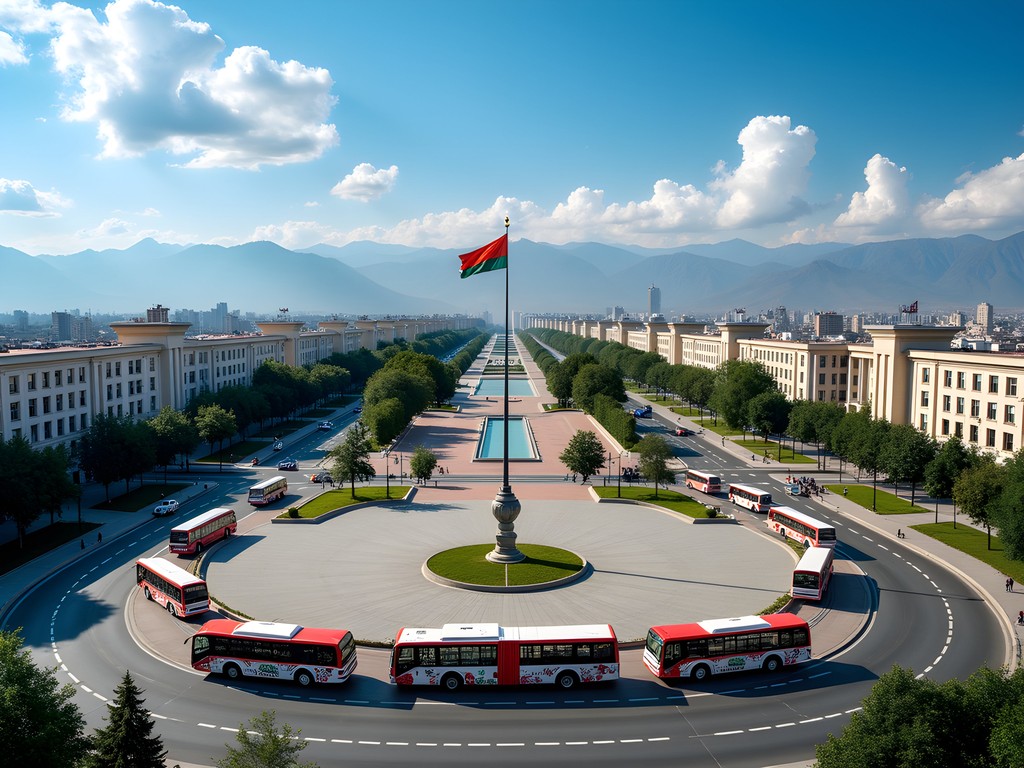
💡 Pro Tips
- Download 2GIS app before arrival for accurate route information
- Learn basic Cyrillic to read destination signs
- Take screenshots of your destination in both English and Russian/Kyrgyz to show drivers
Marshrutkas: The Backbone of Bishkek Transport
Marshrutkas—the ubiquitous minibuses that zip through Bishkek's streets—are simultaneously the most economical and most bewildering transportation option for newcomers. These white or yellow vans operate on fixed routes designated by numbers, but with flexible timing that depends entirely on passenger volume.
During my first marshrutka experience (Route 195 from my hostel to Osh Bazaar), I stood confused at what appeared to be an unmarked bus stop until a local pointed out the small sign with route numbers. The fare was a mere 10 som (about $0.12), making it absurdly economical compared to Seoul's transport costs.
To use a marshrutka, simply flag one down that displays your route number, climb aboard (often through a sliding side door), and pass your fare to the driver when seated. When approaching your stop, call out "ostanovite" (stop) or the simpler "stop" which most drivers understand.
The vehicles themselves vary wildly in condition. Some are relatively new Mercedes Sprinters, while others are Soviet-era relics held together seemingly by willpower alone. For longer journeys, I found my inflatable travel pillow invaluable for comfort on bumpy rides.

💡 Pro Tips
- Keep small bills handy for exact fare
- Learn the Russian phrase for 'stop here' ('ostanovite zdes')
- Observe locals to identify unofficial bus stops
Navigating Taxis and Ride Apps
When marshrutkas prove too crowded or your destination lies off the main routes, taxis offer a convenient alternative. Bishkek presents three distinct taxi options: street hails, app-based services, and unofficial 'shared' taxis.
Official taxis display the recognizable checkered pattern, but many Bishkek residents simply use their personal vehicles as unofficial taxis. This informal system works surprisingly well, though negotiation skills are essential. To hail one, simply stand at the roadside with an outstretched arm—almost any car might stop to offer a ride.
As a solo female traveler, I preferred using the Yandex Taxi app (Russia's equivalent to Uber) for safety and price transparency. The app functions similarly to ride-sharing services worldwide but at a fraction of the cost—most city rides cost between 100-200 som ($1.20-$2.40). One critical difference: drivers often call to confirm your pickup location, so having a language translation app proved invaluable for these brief conversations.
For longer journeys or day trips to nearby attractions like Ala-Archa National Park, negotiate a private taxi for the day. I paid 2,500 som (about $30) for a full-day excursion to the mountains, which included waiting time—an extraordinary value compared to similar services in Western countries.

💡 Pro Tips
- Use Yandex Taxi app for transparent pricing and added safety
- Learn basic numbers in Russian for fare negotiation
- Agree on price before entering unofficial taxis
- Save your accommodation address in Cyrillic to show drivers
Trolleybuses and City Buses: The Slower Alternative
While marshrutkas dominate Bishkek's transportation landscape, the city's trolleybuses and conventional buses offer a slower, more spacious alternative. These electric vehicles follow overhead power lines and operate on numbered routes covering major thoroughfares.
The fare structure mirrors marshrutkas—10 som paid directly to the conductor who moves through the vehicle collecting payments. Unlike the minibuses, these larger vehicles have designated stops marked by blue signs with the letter 'A' or 'T'.
During my exploration of Bishkek's Soviet architectural landmarks, I found the trolleybuses particularly useful for photography purposes. Their large windows and slower pace allowed me to scout locations while in transit. The trolleybus network also operates later than many marshrutka routes, making them valuable for evening returns from restaurants or cultural events.
On particularly hot summer days, these vehicles became mobile saunas—Bishkek regularly hits 35°C (95°F) in July and August. My cooling towel became an essential companion, earning curious glances from locals as I draped it around my neck during the stuffiest rides.
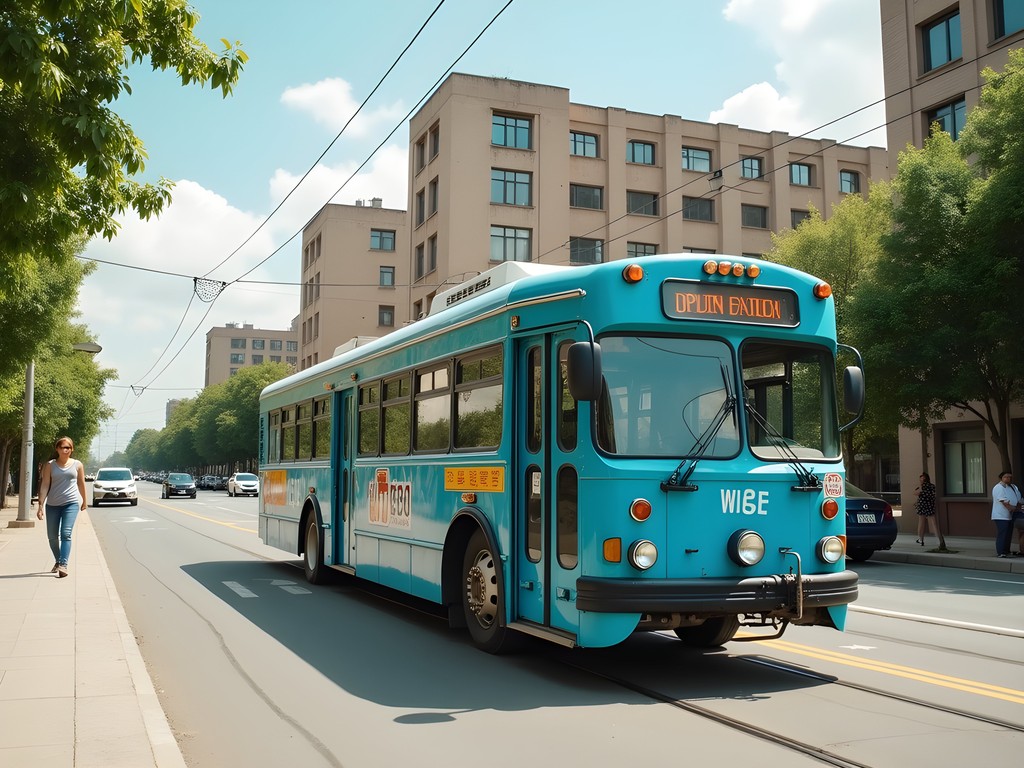
💡 Pro Tips
- Board trolleybuses at designated stops only, unlike marshrutkas
- Have exact change ready for the conductor
- Use Google Translate's camera function to decipher route information posted at stops
Day Trips and Getting Beyond the City
Bishkek's position at the northern edge of Kyrgyzstan makes it an ideal base for day trips to some of Central Asia's most spectacular natural settings. The transportation options for these excursions differ significantly from city navigation.
For my day trip to Ala-Archa National Park (30km south), I initially considered public transport but ultimately opted for a negotiated taxi. This proved wise, as the mountain roads and sparse service would have made marshrutkas impractical. My driver charged 2,500 som ($30) for the entire day, waiting while I hiked for several hours.
To reach Issyk-Ata hot springs, another popular day trip, shared taxis depart from the Western Bus Station when full. The journey costs approximately 250 som per person, though departure times are entirely dependent on filling the vehicle.
For longer excursions to Lake Issyk-Kul or the mountain town of Karakol, marshrutkas and shared taxis depart from Bishkek's Eastern Bus Station. These longer journeys require preparation—I packed my water filter bottle to ensure safe drinking water throughout the day, as roadside stops rarely offer purified options.
One unexpected challenge: altitude adjustment. Even Bishkek sits at 800 meters elevation, with day trip destinations often exceeding 2,000 meters. My portable oxygen canister helped mitigate mild altitude symptoms during hikes in the Tian Shan foothills.
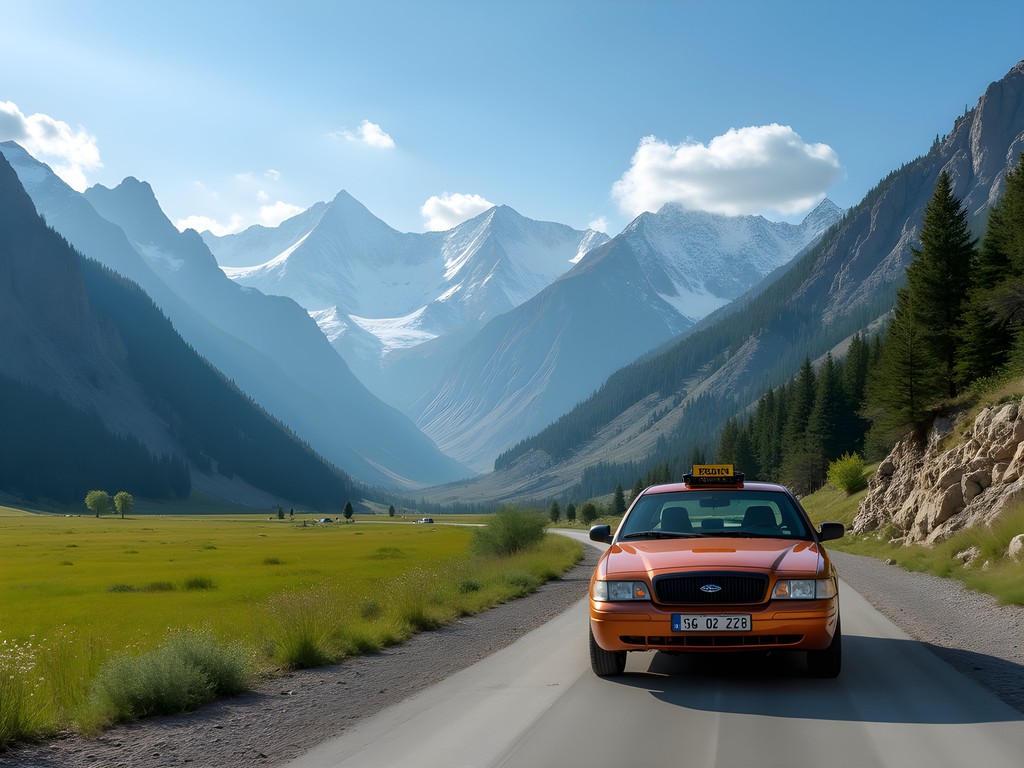
💡 Pro Tips
- Book day trip taxis through your accommodation for better rates
- For shared taxis to popular destinations, arrive early in the morning
- Bring twice as much water as you think you'll need—summer heat is intense
- Download offline maps before mountain excursions where signal is limited
Final Thoughts
Navigating Bishkek reveals much about Kyrgyzstan itself—a place where formal systems and spontaneous solutions coexist harmoniously. The transportation network reflects this duality perfectly. What initially appears chaotic soon reveals its own functional logic, and the apparent limitations become opportunities for cultural connection.
During my week in Bishkek, every journey became more than mere transportation; each ride offered unexpected conversations with locals eager to share their city with a curious foreigner. One marshrutka driver, upon learning of my interest in astronomy, detoured slightly to point out the Soviet-era observatory on the city's southern edge—a gesture of hospitality I'd never experience in more rigid transportation systems.
As you plan your own Bishkek adventure, embrace the city's transportation quirks rather than fighting against them. The marshrutka that arrives seemingly randomly, the shared taxi that takes an unexpected route, the trolleybus that moves at its own unhurried pace—these aren't bugs in the system but features of a transportation network that prioritizes human connection over mechanical precision. In our increasingly standardized world of ride-shares and subway apps, there's something refreshingly authentic about Bishkek's approach to getting around. Pack your sense of adventure alongside your som, and the city will open itself to you, one chaotic, wonderful ride at a time.
✨ Key Takeaways
- Marshrutkas offer the most economical and comprehensive network but require basic Cyrillic reading skills
- Download 2GIS app for accurate route information rather than relying on Google Maps
- Yandex Taxi provides the safest option for solo travelers, especially at night
- Negotiated day-rate taxis are the most practical option for exploring beyond the city
- Learning basic Russian transportation phrases significantly enhances the experience
📋 Practical Information
Best Time to Visit
May-September
Budget Estimate
$30-50/day including accommodation
Recommended Duration
3-7 days
Difficulty Level
Moderate
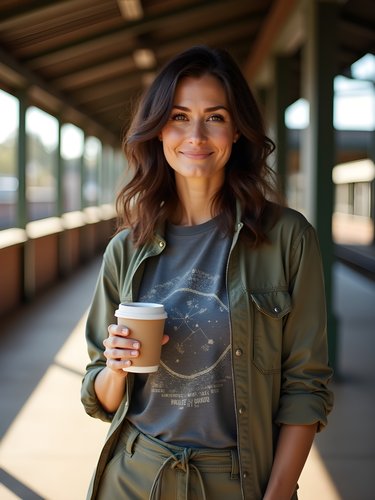
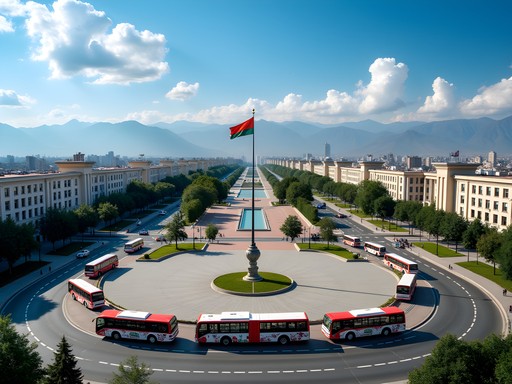

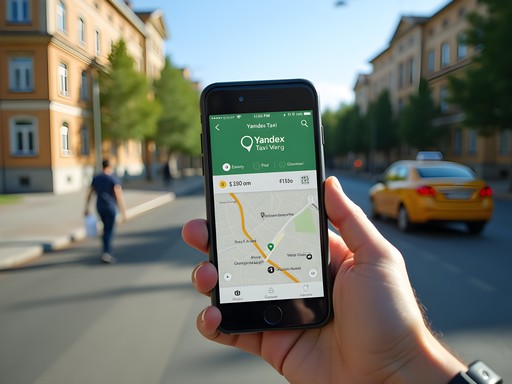
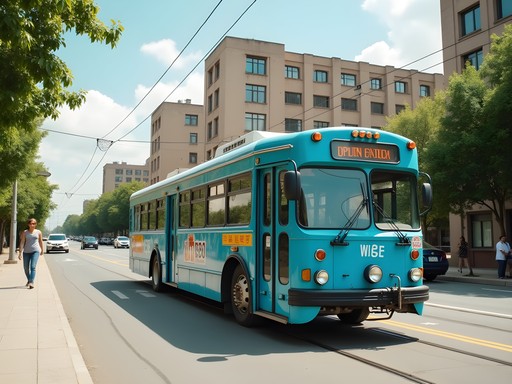
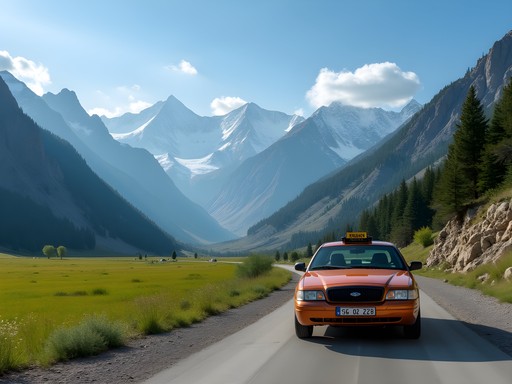


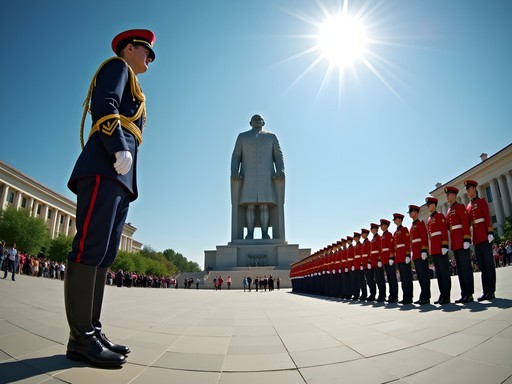







Comments
skyzone
Pro tip: screenshot the Cyrillic names of places you want to go! I kept a photo album of important destinations to show drivers. Saved me so many times, especially with the marshrutkas. Also, don't miss the Osh Bazaar - it's chaotic but amazing for local goods and the marshrutka ride there is an experience itself!
Olivia Spencer
Great tip about the screenshots! I did the same thing. Osh Bazaar is definitely worth the visit - I could have spent all day there just people-watching.
Sophia Gomez
This brings back memories of my business trip to Bishkek last fall! I was there for a sustainable tourism conference and had to navigate the city daily. One tip I'd add - for business travelers who need reliability, I found it worth spending the extra money on a local driver for important meetings. My hotel arranged this for about $30/day. For casual exploration though, I totally agree that marshrutkas are the way to go! I used my offline translator for real-time translation which was incredibly helpful when trying to find the right bus or explaining destinations to drivers.
hikingmood
How much should you expect to pay for a taxi from the airport to the city center? Want to make sure I don't get ripped off!
mountainvibes
I paid about 500-600 som (~$6-7) last year using the Namba app. If you're negotiating directly at the airport, start at 700 som and expect to pay up to 1000. Anything more is definitely tourist pricing!
starseeker
Is Bishkek safe for solo female travelers? Thinking about going next summer!
Olivia Spencer
Hi @starseeker! I traveled solo and felt quite safe, especially in the city center. Just use normal precautions you would anywhere. The biggest challenge was the language barrier, not safety concerns.
exploregal
I went solo last year and felt totally fine! Locals were super helpful when I looked lost. Just download maps offline since internet can be spotty.
Timothy Jenkins
Excellent breakdown of Bishkek's transport options, Olivia! I spent a month there in 2024 researching for my Central Asia series. One thing I'd add is that the Namba taxi app has significantly improved since I first visited in 2022. The city's transport infrastructure is slowly modernizing, but I still find the controlled chaos of marshrutkas gives you the most authentic experience of daily Kyrgyz life. Did you venture to any of the suburbs or nearby villages? The transport dynamics change dramatically once you leave the city center.
Olivia Spencer
Thanks Timothy! I did make it to Ala Archa National Park and a few villages around Issyk-Kul. You're right about the transport changing once you leave the center - I found myself negotiating with drivers much more. Planning a follow-up post on day trips from Bishkek actually!
Timothy Jenkins
Looking forward to that post! Ala Archa is spectacular. I found hiring a driver for the day was surprisingly affordable for those outer excursions.
mountainvibes
Those marshrutkas are such an adventure! I was in Bishkek last year and once accidentally ended up halfway to Issyk-Kul because I couldn't communicate where I wanted to stop. The driver and passengers were super helpful though and made sure I got back on track. Your tip about learning a few Russian phrases is spot on - saved me so many times!
springtime
Great guide! One thing to add - if you're staying more than a few days, consider getting a local SIM card. Data is cheap and having maps on your phone makes navigating the marshrutkas so much easier. The Beeline kiosk at Ala-Too Square set mine up in minutes.
happymaster
How safe is it for solo female travelers using public transport in Bishkek? Planning a trip this summer!
springtime
I went solo last year and felt very safe! The marshrutkas get crowded but people were respectful. Just keep your belongings close like anywhere else.
happymaster
That's reassuring, thanks! Did you have any issues with the language barrier?
springtime
It was challenging but I learned basic phrases and used Google Translate a lot. Young people often speak some English. Having your destination written in Cyrillic helps too!
Frank Garcia
This guide is spot on! I spent three weeks in Bishkek last fall and found the transportation system fascinating. One tip I'd add about marshrutkas - download the 2GIS app, it shows all the routes and stops which was a lifesaver when I couldn't read the Cyrillic signs. Also, for anyone worried about safety, I found the Namba Taxi app more reliable than flagging taxis on the street, especially at night. The fixed price before you get in eliminates any haggling. One thing that surprised me was how the trolleybuses, despite being slow, offer amazing views of the mountains on clear days - route 8 especially!
springtime
Thanks for the 2GIS app recommendation! Just downloaded it for my trip next month.
Frank Garcia
You're welcome! Also worth downloading Yandex Translate - it works offline and can translate Cyrillic signs with the camera feature.
photovibes
Those marshrutkas are wild! Brings back memories of my Central Asia trip last year. The hand signals to stop the van took me days to figure out 😂
Frank Garcia
Haha same here! Did you ever accidentally end up across town because you missed your stop?
photovibes
Only twice! 😅 The drivers were surprisingly helpful though, one even made sure I got on the right marshrutka back.
Venture X
Premium card with 2X miles, $300 travel credit, Priority Pass